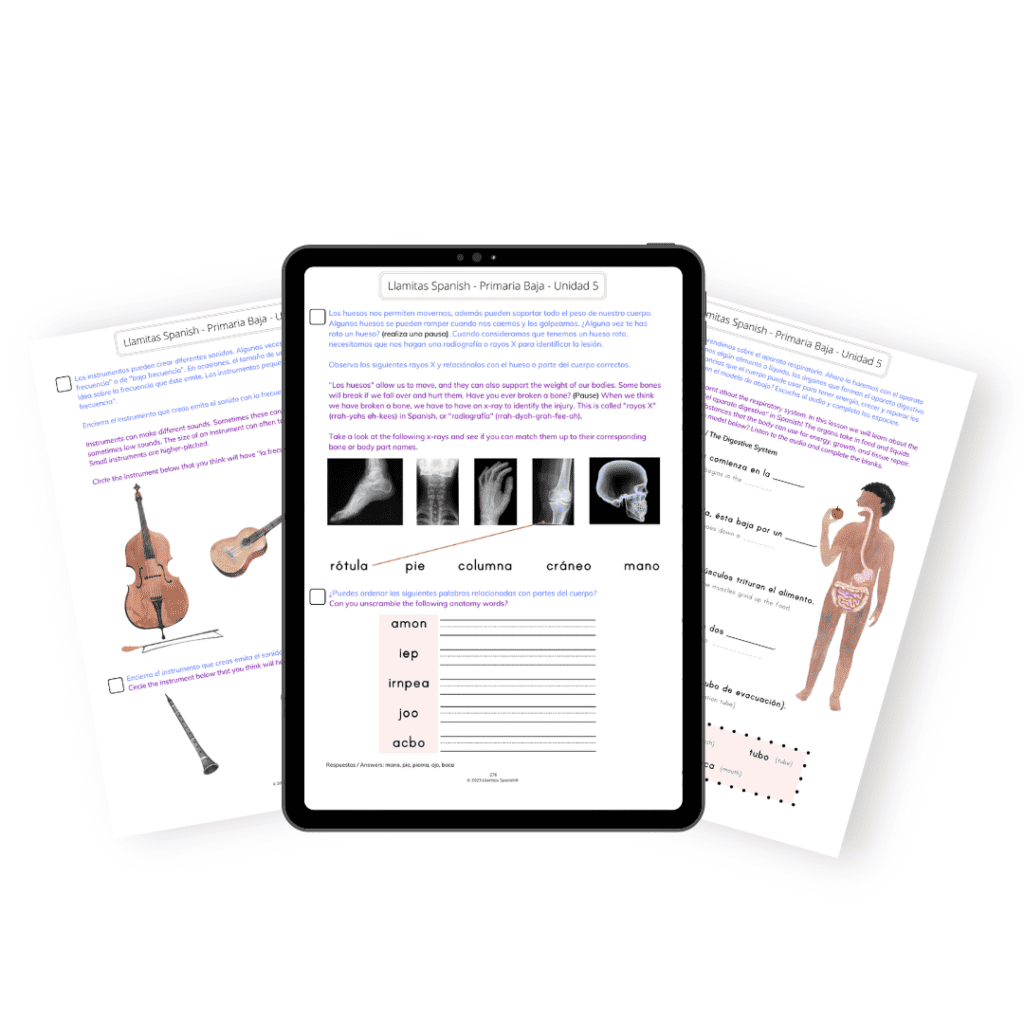In this post: Learn about body parts in Spanish with these fun and interactive resources for Preschool and Elementary aged kids.
From the endless laughter caused by a game of peek-a-boo to enjoying a classic game of Operation, body parts are one of the first things we learn about as kids. It’s fascinating to think about how all the parts complement each other and work together.

This post contains affiliate links.
When learning a language, it’s also a fundamental topic that helps with more advanced lessons such as describing one’s physical features, expressing symptoms of illness and more.
Some of us grasp these concepts better by listening or reading while others prefer drawing. Regardless of your kids’ preferred learning style, we adopt a thematic approach to language learning that makes it more fun, relatable and meaningful.
Now let’s dive into it and discover some fun resources to support teaching your child about ‘el cuerpo humano’!
Table of Contents
Body Parts Vocabulary in Spanish
Learning the body parts can be a great interactive activity. Use the table below as a craft activity to draw and label body parts or point to body parts and have your kids name them in Spanish. Use your imagination to create even more fun games and activities.
| Spanish | English |
| mano | hand |
| brazo | arm |
| pie | foot |
| pierna | leg |
| cabeza | head |
| ojo | eye |
| boca | mouth |
| dientes | teeth |
| lengua | tongue |
| nariz | nose |
| orejas | ears |
| dedos | fingers |
| hombro | shoulder |
| cuello | neck |
| pelo | hair |
Now we’re going to take a look at some of the internal body parts you don’t see – your organs.
| Spanish | English |
| corazón | heart |
| cerebro | brain |
| pulmones | lungs |
| riñones | kidneys |
| diafragma | diaphragm |
| estómago | stomach |
| intestinos | intestines |
| hígado | liver |
El cuerpo humano: Spanish Lessons
Our human body unit includes plenty of kinesthetic learning opportunities, like movement activities with yoga positions, learning fun thematic songs like “La Tía Monica” which gets you moving your body.
Plus there are opportunities for science-based, interactive activities like learning about the respiratory and digestive systems, looking at X-rays and learning about the senses and body percussion- all in Spanish!
We’re excited to have this topic as a unit in our Level 3 Llamitas Spanish curriculum and we know you’d enjoy teaching it and learning along with your kids.
Spanish Books about the Body
We’ve got just the right selection for all the bookworms! Learn lots of new vocabulary and practice pronunciation with the following books:

Use this beautifully illustrated picture book to learn all about our 5 senses in Spanish and how they help us to discover the world around us.
2. El cuerpo humano: Un libro para iluminar

A fantastic title from the PaperPie ‘Shine-a-light’ series (libros para iluminar). Shine a light behind the page to reveal hidden images. In this book discover the human body, from inside a pregnant woman’s tummy to learning about the brain, lungs, digestive system and more!
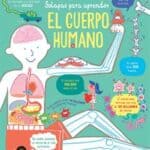
With dozens and dozens of flaps, discover fun facts about the senses, the brain and nervous system, the heart and lungs, bones and muscles and more! A solid science book option in Spanish!
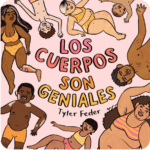
A beautiful and vibrant picture book with short text that celebrates the diversity of our bodies- all ‘geniales’ and in all shapes and sizes! Each page focuses on a different part of the body, showing how different it can be. From faces to legs, skin to eyes, the rhythmic text will keep your littles attention as they admire the many vibrant illustrations on each page.
5. La respiración es mi superpoder

It’s not too early to teach your kids how to practice mindfulness! They’ll learn how to use breathing techniques to control their emotions especially when stressed, angry or annoyed.

Help kids to listen to their bodies and develop emotional intelligence at an early age with this interactive book. A great resource for parents, guardians and teachers.
7. Alicia y el cerebro maravilloso

The brain is one of our bodies’ most fascinating and important organs. Understand how it works and what you can do to ensure it stays healthy as it continues to grow and develop.
8. Mi primer libro sobre el cuerpo humano
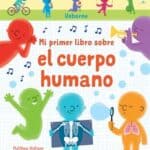
A great and sturdy book without flaps. Discover parts of the body, bones, brain etc, but also discover how to care for your body both physically and mentally with healthy living and sleep.
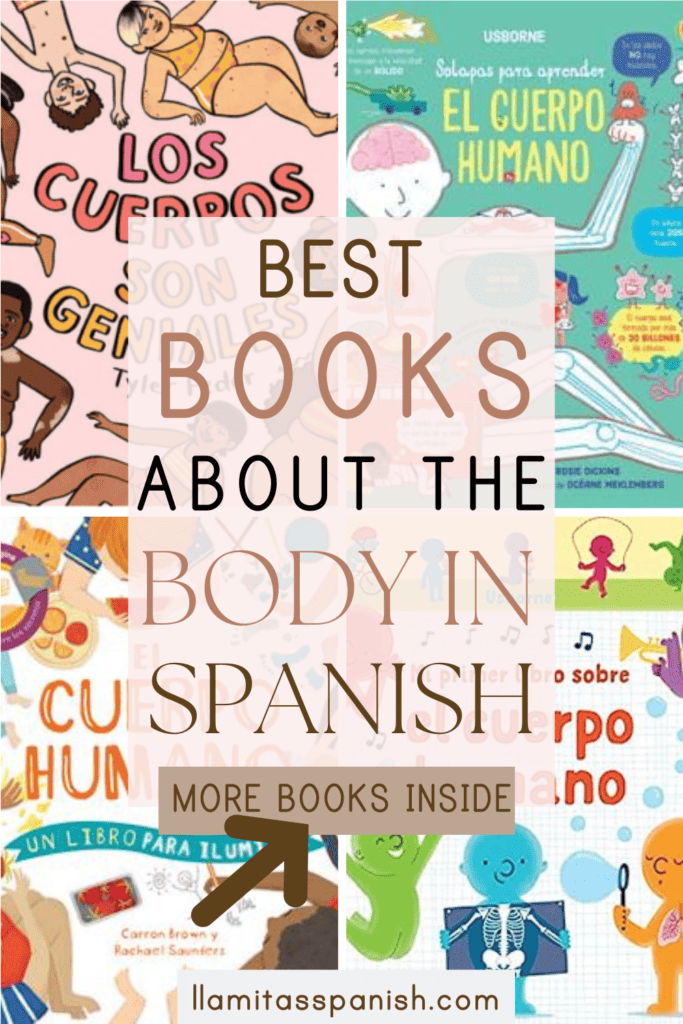
Spanish Songs about the Human Body
We always include songs in our curriculum and our level 3 ‘El cuerpo humano’ unit is no exception. For this theme we include “La Tía Monica” and “Dedo Pulgarcito” along with some of our other favorites.
Always sung by our singer songwriter from Guatemala, Andrea, the music in Llamitas is one of the highlights for many parents!
Take a listen to “La Tía Monica” below to sample her voice!
| Spanish | English |
| (Estribillo) Yo tengo una tía llamada Mónica Que cuando va a bailar, le dicen uh la la. Así mueve la cabeza, Así mueve los hombros… Así mueve las manos… Así mueve las caderas… Así mueve las rodillas… Así mueve el pie… Así mueve los codos… Así mueve todo el cuerpo |
(Chorus) I have an aunt called Monica when she goes dancing, they say ooh la la. Move your head like this, Move your shoulders like this… Move your hands like this… Move your hips like this… Move your knees like this… Move your foot like this… Move your elbows like this… Move your whole body like this… |
Here are some other songs about body parts that you may enjoy! They are available on YouTube. ¡Disfrútenlas! (Enjoy them!)
Perhaps you’re familiar with the index finger and thumb, but do you know the names of the other fingers? You’ll learn them all by the end of this song.
Get moving and grooving with this song as you sing along and learn the different body parts in Spanish.
This classic never gets old and is great for learning some body parts. It also works well in between lessons when you need to take a short break or stretch.
Rockalingua makes it fun to learn the parts of the body with this upbeat song and eye-catching visuals. Sing along while pointing to the right body parts.
Spanish Curriculum for Elementary
Our academic level 3 curriculum is for students who have had at least 2 years of dual language, or formal Spanish education. There are 6 thematic units and 6 authentic and beautifully illustrated folktales.
Each unit covers a variety of areas including phonics, math, literacy, geography, art and music for a thematic, cross-curricula learning experience.
If your child completed our Levels 1 and 2, it’s the perfect program to continue learning right where they left off and for more advanced learners, it’s a great resource to build on what your child already knows.


